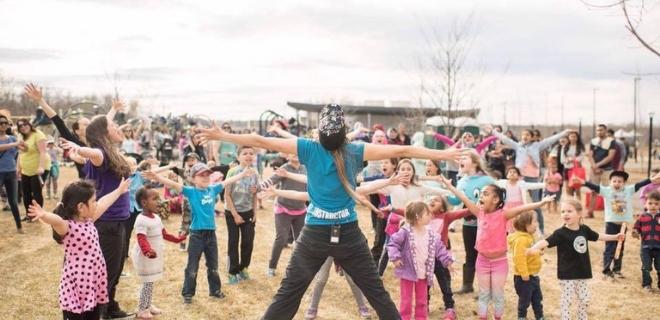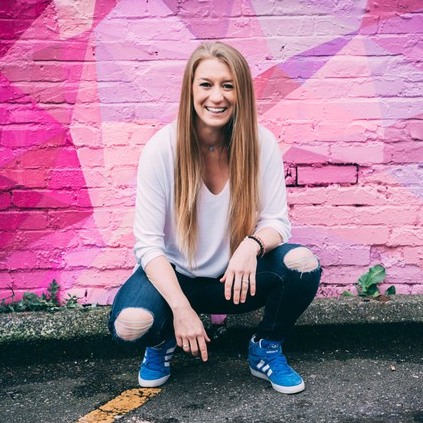5 Things “COVID Kids” Need from Fitness Leaders

We are in the midst of raising a generation of “COVID Kids” – young bodies and minds affected by indoor isolations, limited social interactions, and the impact of increased stressors at home, school and in the community.
Pediatricians and researchers have observed and confirmed that over the last two years, children’s mental, physical and social-emotional health has been significantly impacted. (Ref 1) After screening 172 research papers on the impacts of epidemics on children’s quality of life, Araújo et al. called for practitioners to “[create] activities to promote health and healthy development and prevent toxic stress in children [from disrupted routines, reduced physical activity, heightened stress of parents, nutritional risks and social isolations]. (Ref 2)
The role of fitness leaders in helping children develop their physical, emotional, mental and social wellbeing has never been as important as it is today and will be in the next few years of post-pandemic recovery. You can be there now to help kids bridge any gaps or delays in physical and social milestone skills from their lack of exposure to quality children’s movement programming.
When designing your programs and offers, here are five things that “COVID Kids” need from you as a fitness leader:
PHYSICAL LITERACY
All quality kids fitness programs are based in physical literacy, which is the competence (psychomotor), confidence (cognitive), and motivation (affective, behavioural) to be active for life. The main outcomes of fitness programs for children must prioritize the development of Fundamental Movement Skills (FMS), positive mindsets, and a value for physical activity. Give kids an opportunity to explore a variety of different types of movement, make links between movement and their state (their energy/how they feel), and build self-confidence through learning, challenges, repetition and eventually skills mastery.
PROGRESSIVE PROGRAMMING
Hold a vision of supporting each child’s physical literacy journey, learn about the developmental stages and phases for children’s fundamental movement skills. For example: Standing on two feet > Bending/Bouncing on two feet > Jumping on two feet > Jumping on two feet moving forward. As a movement practitioner, learn how to assess their current skills, identify the areas that need improvement, and be able to provide specific activities, games, and instruction to help them bridge any gaps.
PLAY
One of the most common mistakes passionate fitness enthusiasts make when choosing to work with children is that they take adult programs and teaching methods and ‘simplify’ them for children. From verbal coaching methods, movement sequences, and program design, kids don’t need a simpler version of adult fitness – they need a completely different way of learning and growing within their fitness experiences: kids need to play.
It may sound overly simple and exaggerated, but play is like a magic pill to inoculate and help children recover from any negative effects from the pandemic.
Play allows kids to:
- Work through and problem-solve ‘big’ problems in ‘safe’ imaginative spaces
- Express their thoughts, ideas, emotions and creativity
- Connect socially with other children
- Reduce anxiety by finding peace in the present moment
- Simply have fun, for the sake of fun.
INTERACTION
The greatest impact of the pandemic on children’s health was on their mental health (Ref 2), and a large portion of this was due to the limitations of social interactions which play a critical role in the healthy child development. As a fitness leader, how can you begin to re-integrate more social interactions among participants in safe ways?
Learning about social emotional skills and different ways to weave these skills within fitness games, exercises and activities can provide the perfect booster for kids to regain a sense of connection to other kids and role models, like you!
SAY YES
If you have a calling to help the next generation be healthier and happier, kids need you to say YES. Even if you are worried about how to ‘manage’ a group of kids, don’t really know how to design kids fitness programs, or have all the details on setting up a kids fitness business (insurance, marketing, program partners etc.); kids need you to say YES to creating a place where they can grow, learn and thrive (and trust me, parents are also looking for you to help them keep their kids active).
Don’t let any feelings of not knowing what you’re doing stop you from taking action and making an impact in the lives of kids. Here are some resources to support you in learning more about quality kids fitness programming and how to launch a profitable kids fitness business:
- canfitpro Children’s Fitness Coach course
- HIGH FIVE Instructor Trainings
- PL3Y’s Kids Fitness Business Coaching and Tools
In the future, our kids will look back at this time and reflect on how we (the adults, grown-ups and leaders) took action to help them recover, grow and flourish after years of isolation, restrictions and limited programming.
How will you play a role in helping “COVID Kids” recover from the pandemic, rediscover the joy of moving their bodies, and reconnect to the powerful effects of physical activity on their social, emotional and mental health?
REF 1: https://pubmed.ncbi.nlm.nih.gov/34614137/
REF 2: https://www.ncbi.nlm.nih.gov/pmc/articles/PMC7510529/

